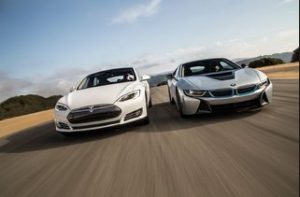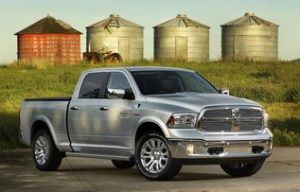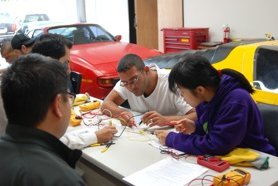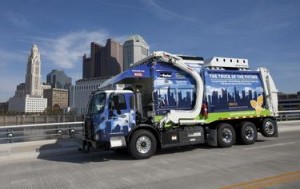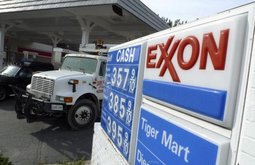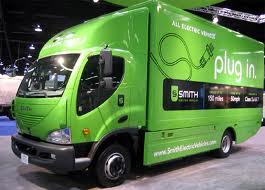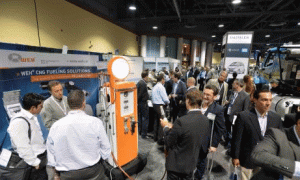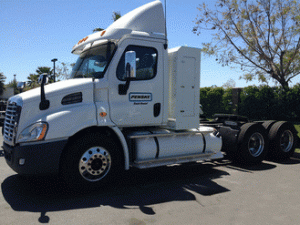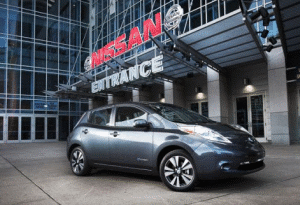by Jon LeSage, editor and publisher, Green Auto Market
Here’s my take on the 10 most significant and interesting occurrences during the past week…….
 Well it looks like many of us fell for it on the BMW-Tesla deal. Last week, Tesla CEO Elon Musk told German media giant Der Spiegel that the two automakers were continuing talks that could set aside competition for the luxury electric car space and focus more on mutual gains. That could have meant combining “lightweighting” from BMW and advanced batteries from Tesla Motors and jointly creating better charging stations. Now, BMW told German business magazine Wirtschafts Woche that it doesn’t have plans for cooperation with Tesla and won’t be doing what other major OEMs have done in buying Tesla’s stock shares. That comes from an unnamed source at BMW. It could also have something to do with BMW digging plug-in hybrids over the battery-electric-only mindset of Tesla. BMW just launched a three-prong approach to bringing these extended-range plug-ins to China. One is a long-wheelbase 5-Series sedan, another is a prototype 3-Series sport sedan, and another project is the new Power eDrive system than can produce 670 horsepower. Tesla will be able to get over it; things are going well enough for the electric carmaker to ramp up its Fremont, Calif., production plant ahead of an expected production increase. Global demand is moving things along and will allow for building its all-wheel drive Dual Motor Model S and the start of its Model X crossover production, the company said.
Well it looks like many of us fell for it on the BMW-Tesla deal. Last week, Tesla CEO Elon Musk told German media giant Der Spiegel that the two automakers were continuing talks that could set aside competition for the luxury electric car space and focus more on mutual gains. That could have meant combining “lightweighting” from BMW and advanced batteries from Tesla Motors and jointly creating better charging stations. Now, BMW told German business magazine Wirtschafts Woche that it doesn’t have plans for cooperation with Tesla and won’t be doing what other major OEMs have done in buying Tesla’s stock shares. That comes from an unnamed source at BMW. It could also have something to do with BMW digging plug-in hybrids over the battery-electric-only mindset of Tesla. BMW just launched a three-prong approach to bringing these extended-range plug-ins to China. One is a long-wheelbase 5-Series sedan, another is a prototype 3-Series sport sedan, and another project is the new Power eDrive system than can produce 670 horsepower. Tesla will be able to get over it; things are going well enough for the electric carmaker to ramp up its Fremont, Calif., production plant ahead of an expected production increase. Global demand is moving things along and will allow for building its all-wheel drive Dual Motor Model S and the start of its Model X crossover production, the company said.- State governments are looking more at electric vehicle (EV) and hybrid owners as a funding source. Wisconsin has joined five other states to impose a fee on fuel-efficient vehicles; EV and hybrid owners will get a $50 annual charge. The new fee has been designed “to ensure these owners continue to pay their fair share of the operating costs of our infrastructure,” said Wisconsin DOT Secretary Mark Gottlieb. Washington Governor Jay Inslee sees it another way; Inslee wants to extended a state tax break for EVs and look into giving them access to carpool lanes. Cutting carbon pollution and reducing dependence on fossil fuels gets support in the state, but others question whether EV owners should get preferences. Inslee would agree with many leaders mentioned in another Green Auto Market article – this is part of his larger effort to tackle climate change. One representative who heads the House Finance Committee has concerns about extending that tax break, which expires on July 1.
- EPA’s Christopher Grundler makes Automotive News’ annual all-star list. Grundler, director, Office of Transportation and Air Quality at the US Environmental Protection Agency, has been acknowledged for the role he’s playing in guiding the agency through adoption of its tough emissions and fuel economy rules. Grundler has led offenses against automakers overstating their mpg stickers about their best-in-class fuel-efficient vehicles. Hyundai and Kia were recently hit with a $100 million civil penalty for overstating mileage along with other fines; other automakers have revised fuel economy labels, including Mini and Mercedes-Benz, and Grundler’s office has played a leading role in this tactic.
- Fleets in Texas have access to an incentive for propane autogas vehicles. The Propane Council of Texas is offering up to a $7,500 incentive for purchasing a propane-powered vehicle for their commercial fleet. The program is capped at $15,000 available per fleet.
- The Renault-Nissan Alliance has passed the 200,000 mark in electric vehicle (EV) sales. The global automaker says that about 150,000 of that has been Nissan EVs sold in the US, Asia, and Europe – mostly the Leaf but also the e-NV200 small commercial van that may be introduced into the US. Renault offers four EV models – with its Zoe and Kangoo ZE being top selling, followed by the Twizy and Fluence ZE.
- Southern California Edison’s (SCE) energy storage may be good for electric vehicle (EV) batteries. Electric utility giant SCE is investing more than anyone else in storage – enough for 250 megawatts (MW) of energy storage. That started out as needing 50 MW to make up for the loss when its San Onofre nuclear power plant was taken offline due to safety concerns, but its order has been five times that need. Much of that storage is coming from lithium-ion battery cells similar to what’s being used now in electric vehicle battery packs. Vehicle-to-grid (V2G) systems may be used to turn these EVs into storage units for excess energy.
- Shedding 700 pounds has been very good for F-150 fuel economy. Ford Motor Co. has increased the fuel efficiency of its 2015 F-150 pickup by 29% with its lighter-weight aluminum body. When equipped with a 2.7L V-6 EcoBoost engine, the truck is getting 26 mpg highway, 19 city, and 22 combined, according to the US Environmental Protection Agency.
- Miami-Dade County, Fla., has added more hydraulic hybrid trash trucks to its fleet. That’s the third order of the trucks built with Parker Hannifin’s RunWise Advanced Series Hybrid Drive System, bringing the total in its fleet up to 64 of these vehicles. Using these hydraulic hybrids is reducing fuel consumption by up to 50%, according to Parker Hannifin.
- Renewable natural gas is getting more support. A new report, “Decarbonizing the Gas Sector,” from the Bioenergy Association of California (BAC), makes some impressive statements about the fuel’s potential. Organic waste converted into biogas could meet more than 10% of California’s natural gas demand. According to BAC, total organic waste in the state could be used to produce 2.5 billion gge (gasoline gallon equivalents) of transportation fuel, enough to replace three quarters of all the diesel fuel used in the state.
- Volkswagen has high hopes for its “Think Blue. Factory” program. The German automaker thinks it can reduce energy and waste consumption, along with CO2, waste, and solvent emissions, by 25% by 2018 compared to its 2010 levels. The company has already implemented more than 2,700 projects that have made its production processes 17% more environmentally sustainable over the past three years. Recycling and reusing cooling water at some of its plants has been one of the tactics producing benefits, Volkswagen said.

